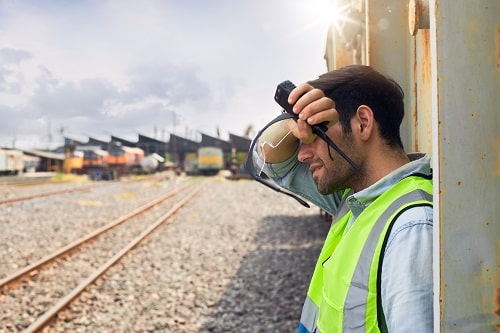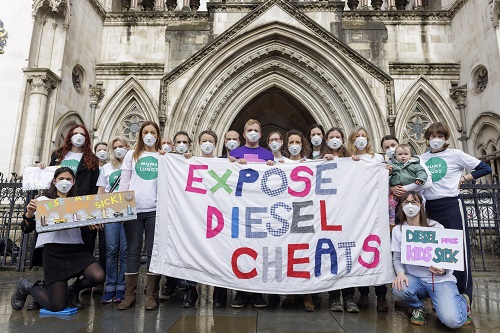Opinion
A new Building Safety Remediation Scheme would hold developers and builders to account for all fire and building safety defects in homes
At the Second Reading of the Levelling-Up and Regeneration Bill in the House of Lords, I flagged up the inadequacies of the government’s building safety remediation policies pursuant to the Building Safety Act 2022 which had been the occasion of my earlier attempt to get a ‘polluter pays’ principle established in law.
Since the beginning of April 2023 my parliamentary mailbag has again been filled with messages from hundreds of individual leaseholders most with personal stories of how they are faced with rolled up service charges in waking watch costs, hugely escalated insurance premia and the prospect of ruinous contributions for remediation works. Some have been required to evacuate buildings. There were accounts of unresponsive managers or freeholders, of insuperable conveyancing hurdles and an inability to remortgage or sell properties. Many gave detailed accounts of how badly these had impacted their lives and relationships.

Significant risks for residents of flats
Realising that inherent safety of residential blocks and unfolding post-Grenfell might affect a significant number of buildings, the government sought to limit exposure. It has therefore focused on cladding and higher buildings, and in particular aluminium composite material (ACM) cladding on over 18m blocks. But what is now being revealed and as presaged in the government’s own and now withdrawn Consolidated Advice Note of January 2020, is a considerably wider range of design, installation and material specification issues which together present significant risks for residents of flats.
One outcome is the arbitrary sub-11-metre block exclusion from all government remediation funding. This follows the advice of the Independent Expert Statement (IES) of July 2021, which suggested low rise buildings entail inherently lower risk and as claimed during the Building Safety Bill debates. But nothing in the IES appears to acknowledge the catastrophic, but thankfully not fatal, fire of September 2020 at Richmond House, Worcester Park in Merton, south London. This four-storey (sub-11m) building by all accounts was so far ablaze some 11 minutes into the fire that it could not be saved and was a total loss. There might well have been casualties had residents not ignored the ‘stay put’ advice but the point is that the building as a whole seems to have had insufficient resistance to the spread of fire though I do not wish to prejudge official findings.
My view is simply that low rise does not automatically equate with acceptably low risk and beyond danger to life and limb; if a building has such limited integrity that it cannot withstand a fire long enough to enable firefighters to ensure everyone is safe and put out the blaze, it likely becomes an insurance write-off. At that point lenders and insurers are likely to re-evaluate the risk profile of similar buildings, with implications for annual mortgage and insurance costs and ultimately market value.
Of course, readers will know better than a non-specialist like me, the number of factors relating to combustibility of materials, ignition risks, resistance to spread of fire, compartmentation and fire stopping along with preventative installations, warning systems and strategies. And the sad thing is that many of the most unsatisfactory cladding and internal materials happen to be very efficient insulators, lightweight, easy to install and even attractive in appearance – and may have been selected with the best of intentions. Further, some risks arise from human choice and financial means. I do not wag the finger at e-bike battery risks or the purchase of second-hand but untested electrical appliances on the web; even less, the response to desperately limited or absent storage space resulting in pushchairs and bicycles unsuitably stationed in common ways.
There are other exclusions including commonhold and the more numerous leaseholder-owned or enfranchised blocks. And despite protests that many freehold block owners were no more guilty of critical building safety defects than leaseholders, freeholders appear to have been in the government sights. Even if not liable for the defects, they became responsible for actioning a remediation scheme.
Caught unaware
Whatever the cause, freehold block investors and managers seem to have been caught unawares and may well not have the experience or capacity to take the necessary steps despite being made responsible for taking remedial action.
All sort of issues with generating the necessary certificates required by leaseholders seeking to sell have snarled up transactions; accuracy and accountability for information provided is lacking and conveyancers run into problems with PI cover with the result that some are withdrawing from handling this property type. The labyrinthine nature of the current process and the disastrous impacts for leaseholders in particular is plain. Furthermore, because a comprehensive solution hasn’t been put in place rapidly from day one, making good policy and regulatory shortcomings becomes ever more difficult as defensive strategies rapidly develop.
An unfortunate side effect of all this is that some leasehold reform pressure groups have alighted on the confusion as a reason to demand the abolition of long leasehold and a move to commonhold; this is an entirely separate issue from defective initial construction and failure to adhere to building regulations. In any event the inherent friction remains between the leasehold ownership of a unit as part only of a larger building, under separate ownership, control or management, whether communally or by a traditional landlord entity; and the need for enforceable covenants or house rules for payment of dues and maintaining standards of behaviour customarily enforceable via leasehold tenure, persists.
Protect innocent owners
Any solution to all this needed to meet several aims: to protect the innocent owner; to establish responsibility for remediation costs and ensure remediation delivery; to provide clarity and stability to a very important market sector (especially for first time buyers and new housing provision on scarce urban plots); and not least, to disincentivise poor construction practices in future.
The government scheme under the Building Safety Act 2022 achieved only some of these, leaving a very significant portion of the problem in limbo as if the market generally could be relied on to absorb and disperse the cost and risk painlessly. My mailbox told a different story and as a registered valuer this suggested to me that it was and remains a high-risk strategy, playing quite literally with the lives and livelihoods of innocent folk.
‘Polluter pays’ scheme
The ‘Polluter Pays’ scheme was the outcome of a team effort which I narrowly failed to get the House of Lords to agree to it in a debate on the Building Safety Bill early in 2022.
The current iteration of this is an amendment to the Levelling-Up and Regeneration Bill and is now known as the Building Safety Remediation Scheme (to avoid sloganizing parliamentary discourse). It draws on the same philosophy, legal and technical background but even now remains under consideration as to whether its current form it is sufficiently concise, direct and comprehensible to gain general parliamentary appeal and may need redrafting. It is after all, a specialist area with a large number of ‘moving parts’ which even experts struggle with.
But the basics are that if residential blocks erected or converted in the last 30 years can be shown not to have been constructed or converted in accordance with the Building Regulations, codes of practice and manufacturers’ instructions, the developer and main or principal contractor would shoulder strict liability on a joint and several basis for remediation and consequential costs.
The initial establishment of critical defects would if necessary be via an adjudicator. There would be no need for leaseholders or block freeholder to establish blame beyond developer/contractor or apportion it to others; limited rights of appeal to the First Tier Tribunal would avoid protracted and ruinously costly legal battles.
Remediation costs where the original developer/contractor had folded, was insolvent or simply disappeared would come from a fund backed by a broad levy across the industry including construction professionals, material manufacturers/suppliers, contractors, developers and warranty providers. This would be very different from the limited application of the current government levy and is designed to encourage participants to build their way out of the problem rather than to retreat in the face of significant assaults on company balance sheets.
This does require per building assessment but in reality the extent of defects cannot be established otherwise.
On present evidence it seems likely that some 10 per cent of blocks are affected by critical building safety defects – which means that the balance should be unaffected. But that reinforces the need to ensure that buildings with problems are investigated and dealt with and not allowed to contaminate and create wider risks for an entire market sector. At the time of writing 27 mandatory evacuations of residential blocks for critical fire safety reasons have taken place since summer 2017 and the annual tally seems to be accelerating. Were it not for waking watch patrols the number would be far higher but for those residents affected the effects are often horrific.
Ultimately, I see this as a matter of consumer protection; in what other walk of mercantile life can a product or service be delivered to the unsuspecting public with so little enforceability of or responsibility for essential design, creation, certification and fitness for purpose of the end product? And what does the current state of affairs as regards innocent leasehold owners say about standards, regulation, a rules-based system and innate justice in the UK? And what are the reputational implications for our construction sector across the globe?
It is clear that the time has come to address these issues which clearly are not going away. We are now over six years past the Grenfell tragedy. We know what the issues are, it is within our power to deal with them and it should not be a matter of political dispute that we have to find a way of addressing them and not simply ignoring the problems before they suddenly become acute.
For more information on the proposed Building Safety Remediation Scheme see:
https://buildingsafetyscheme.org/
@polluterpaysbsb
The Earl of Lytton is a member of the House of Lords.
OPINION

Heat at work: a silent killer
By Halshka Graczyk and Lacye Groening, ILO on 07 April 2025
Workers across the world are increasingly being exposed to excessive heat with serious implications for their safety and health. It is therefore vital that governments, employers and workers’ organisations develop, share and implement practical and low-cost strategies and measures for effectively reducing the risk from heat stress at work.

Making good work the foundation
By Mike Robinson FCA, British Safety Council on 07 April 2025
In 2024, for the first time, the UK dropped out of the list of the top 20 happiest countries: according to the World Happiness Index. This year, the UK rests in 23rd place, slightly ahead of the US and behind the Nordic countries, Germany, the UAE and others.

The air we share: why tackling pollution protects us all
By Scott Paul, Mums for Lungs on 04 April 2025
Air pollution is often invisible; its impact is anything but. Whether you’re a parent worried about your child’s lungs, a construction worker breathing exhaust fumes, or a commuter passing through busy streets, polluted air is everyone’s problem.



